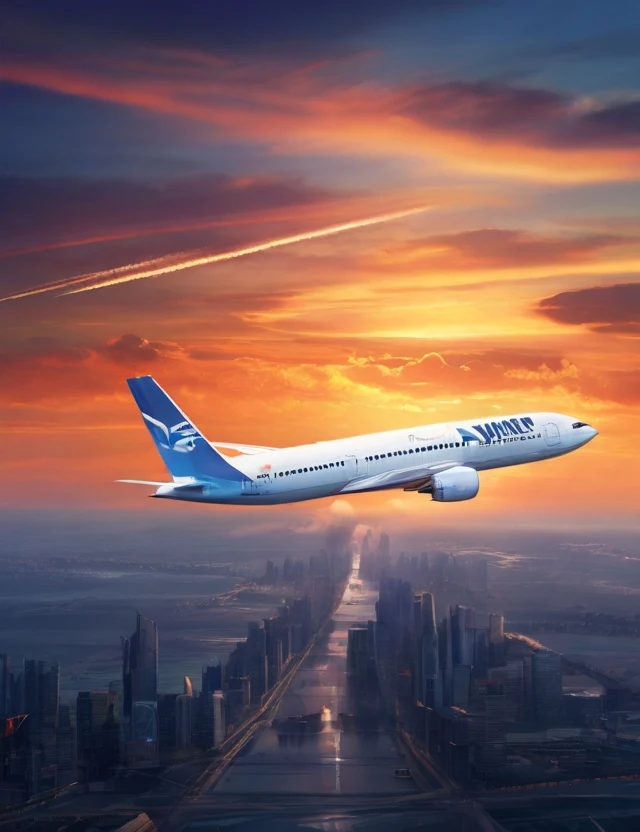I. Introduction
In today's interconnected world, international airlines play a pivotal role in facilitating global connectivity. As technological advancements continue to revolutionize the aviation industry, these carriers serve as the lifelines connecting people, cultures, and economies around the globe.
II. Evolution of International Airlines
Early Days of Aviation
From the Wright brothers' first powered flight to the advent of commercial air travel, the evolution of international airlines mirrors the progress of human civilization. What started as a daring venture has now become an integral part of our daily lives.
Emergence of Commercial Air Travel
The mid-20th century witnessed a boom in commercial air travel, with airlines transforming from small-scale operations to major corporations. The shift from propeller planes to jet engines marked a turning point, enabling faster and more efficient international journeys.
Technological Advancements
The continuous pursuit of innovation has led to cutting-edge technologies in the aviation sector. From advanced avionics to state-of-the-art materials, modern aircraft redefine the possibilities of international air travel.
III. Key Players in International Aviation
Major International Airlines
Leading the pack are renowned international airlines with vast fleets and extensive route networks. These carriers not only connect major cities but also act as crucial conduits for passengers transferring between continents.
Alliances and Partnerships
To enhance global reach and efficiency, many airlines form alliances and partnerships. These collaborations facilitate code-sharing, shared facilities, and synchronized schedules, providing passengers with seamless connectivity.
IV. Routes and Destinations
Expansive Global Networks
International airlines operate on expansive global networks, linking continents and making the world more accessible. The ability to connect even remote destinations fosters economic growth and cultural exchange.
Hub-and-Spoke Model
The hub-and-spoke model, where major airports act as hubs connecting to smaller airports, optimizes route efficiency. This strategy allows airlines to concentrate resources, streamline operations, and offer a wide range of destinations.
V. Technology in Air Travel
Modern Aircraft Technology
Advancements in aircraft technology contribute to improved fuel efficiency, reduced emissions, and enhanced safety. From fuel-efficient engines to aerodynamic innovations, the modern fleet is a testament to the industry's commitment to sustainability.
Digital Transformation in the Aviation Industry
The digital era has transformed the passenger experience. Online bookings, mobile check-ins, and inflight Wi-Fi are just a few examples of how technology enhances convenience and connectivity for international travelers.
VI. Challenges Faced by International Airlines
Regulatory Hurdles
Navigating through diverse international regulations poses a challenge for airlines. Compliance with safety standards, air traffic management, and geopolitical considerations requires meticulous planning and adaptation.
Economic Factors
Fluctuating fuel prices, economic downturns, and currency fluctuations impact the financial stability of international airlines. Strategic financial management becomes paramount to weather economic uncertainties.
Environmental Concerns
The aviation industry faces increasing scrutiny regarding its environmental impact. International airlines are embracing eco-friendly practices, investing in sustainable fuel alternatives, and working towards carbon neutrality.
VII. The Impact of Global Events
Pandemics and Travel Restrictions
The COVID-19 pandemic brought unprecedented challenges to international airlines. Travel restrictions, lockdowns, and health protocols disrupted the industry, forcing carriers to adapt rapidly to a changing landscape.
Political Turmoil and its Effects
Geopolitical instability can significantly impact international air travel. Political tensions, trade disputes, and diplomatic issues may lead to route changes, affecting both airlines and passengers.
VIII. Customer Experience in International Air Travel
In-Flight Services
A crucial aspect of international air travel is the in-flight experience. Airlines strive to differentiate themselves by offering premium services, comfortable seating, and entertainment options, enhancing the overall journey.
Loyalty Programs and Passenger Comfort
To retain customers, many international airlines implement loyalty programs. These initiatives reward frequent flyers, providing incentives and exclusive perks, contributing to passenger satisfaction and loyalty.
IX. Sustainable Practices in Aviation
Green Initiatives
Acknowledging the environmental impact of air travel, international airlines are investing in green initiatives. This includes the adoption of sustainable aviation fuels, energy-efficient technologies, and eco-friendly operational practices.
Carbon OffsettingSome airlines participate in carbon offset programs, allowing passengers to contribute towards environmental conservation projects. This approach aligns with a broader commitment to reduce the carbon footprint of international air travel.
X. The Future of International Airlines
Emerging Trends
The future of international airlines holds exciting possibilities. Increased connectivity, more fuel-efficient aircraft, and innovations in travel technology are on the horizon, promising a more sustainable and efficient industry.
Anticipated Innovations
From supersonic travel to artificial intelligence-driven services, the aviation industry is poised for groundbreaking innovations. The integration of smart technologies and sustainable practices will shape the next chapter of international air travel.
XI. Conclusion
International airlines continue to be the driving force behind global connectivity. Navigating the skies with a commitment to innovation, sustainability, and passenger satisfaction, these carriers bridge the gaps between nations and cultures.
# FAQs
1.How have international airlines coped with the challenges posed by the COVID-19 pandemic?
International airlines have implemented various measures, including enhanced cleaning protocols, flexible booking options, and revised operational strategies, to adapt to the challenges posed by the pandemic.
2.What role do alliances play in the operations of international airlines?
Alliances enable international airlines to optimize routes, reduce costs, and offer passengers a more extensive network of destinations through code-sharing and collaborative agreements.
3.How are international airlines addressing environmental concerns?
Many international airlines are actively investing in sustainable practices, such as the use of eco- friendly fuels, energy-efficient aircraft, and carbon offset programs, to minimize their environmental impact.
4.What are the key factors influencing the future of international air travel?
Emerging trends like increased connectivity, technological innovations, and a focus on sustainability are shaping the future of international air travel.
5.How do loyalty programs contribute to the success of international airlines?
Loyalty programs enhance customer retention by offering exclusive benefits and rewards to frequent flyers, fostering a sense of loyalty and satisfaction among passengers.






"Refreshing to see a website that values user experience as much as content."
ReplyDeleteThe search function works like a charm. Found what I needed in seconds.
ReplyDelete"Well-organized categories, makes finding info a breeze
ReplyDelete